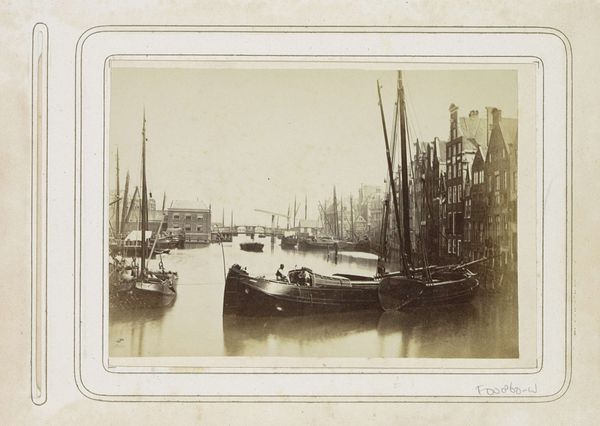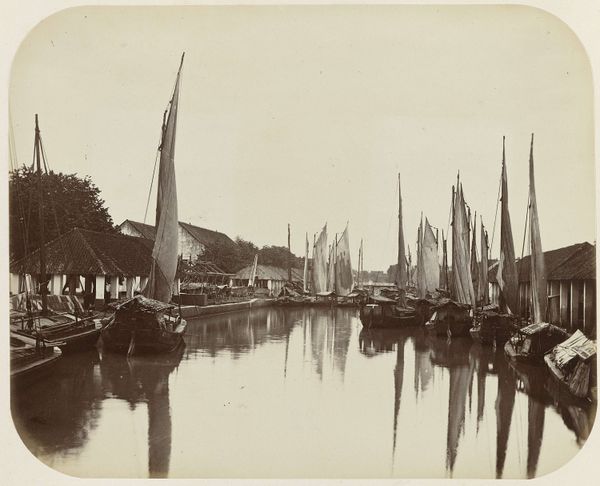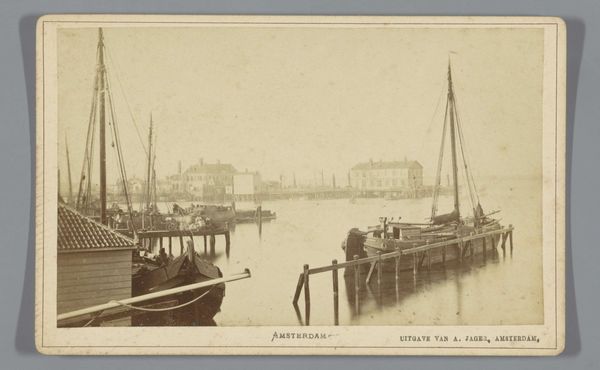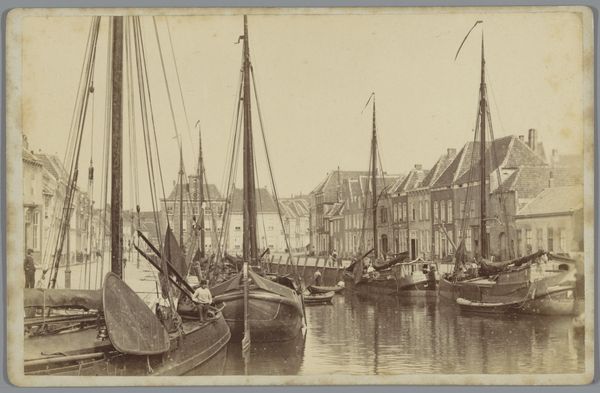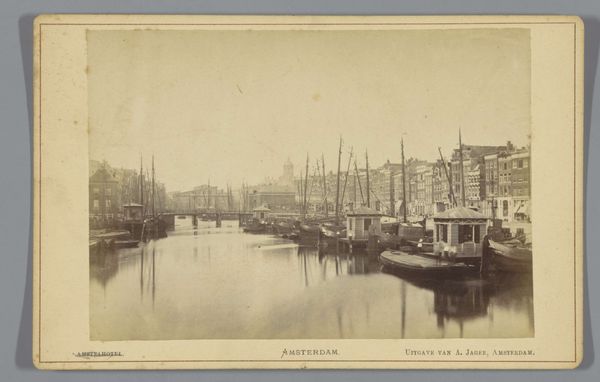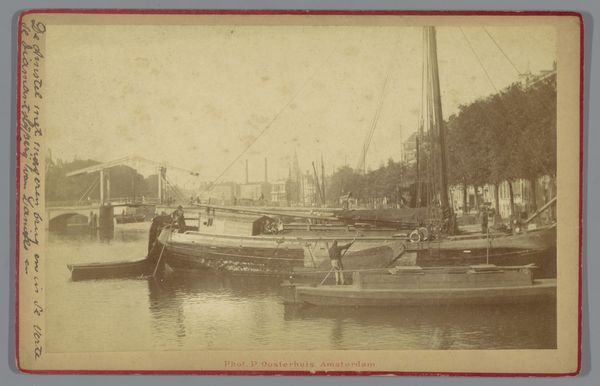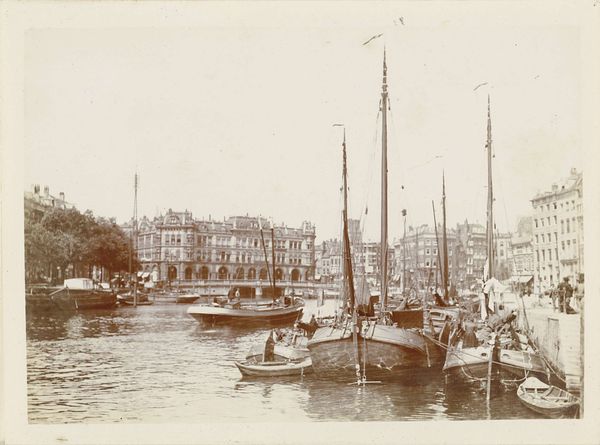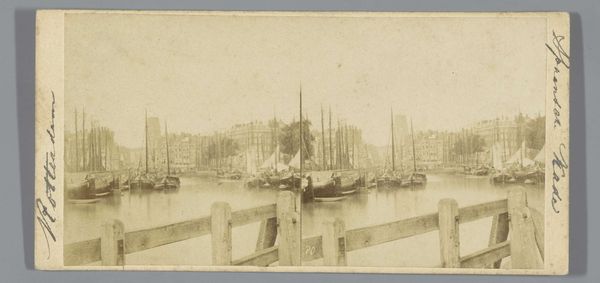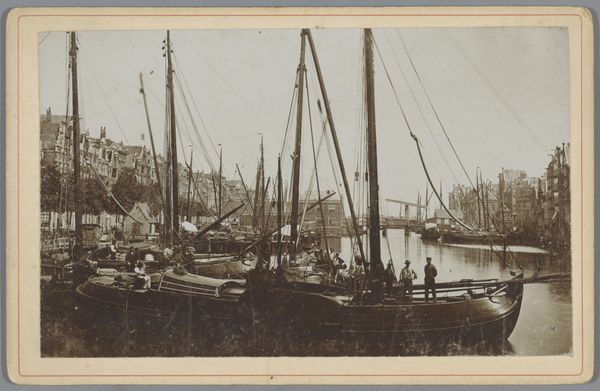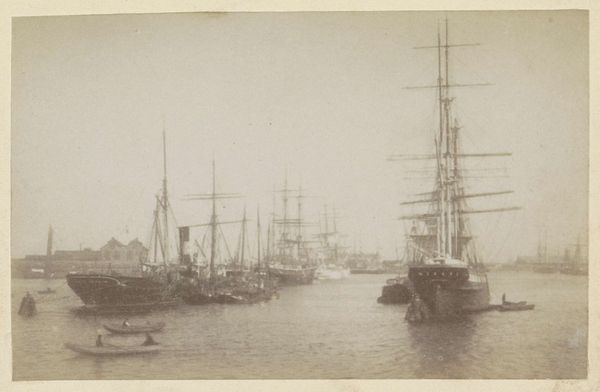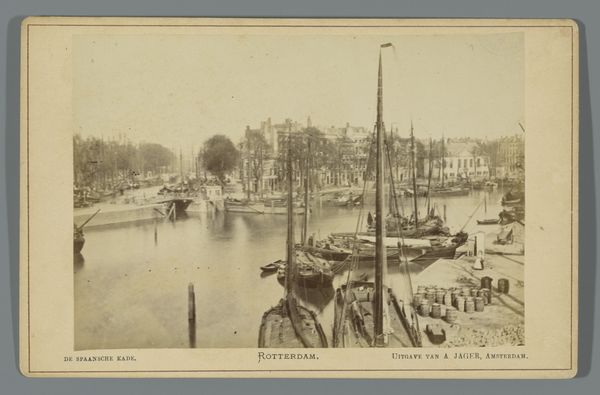
Gezicht op het Damrak in noordelijke richting, met op de voorgrond een beurtschip c. 1860 - 1880
0:00
0:00
photography, gelatin-silver-print
#
dutch-golden-age
#
landscape
#
photography
#
gelatin-silver-print
#
cityscape
#
realism
Dimensions: height 95 mm, width 135 mm
Copyright: Rijks Museum: Open Domain
Editor: Here we have Andries Jager's "View of the Damrak towards the North, with a Freight Barge in the Foreground," a gelatin silver print dating from around 1860 to 1880. It has this almost hazy quality that makes me think of a memory. What's your read on this piece? Curator: It’s interesting to consider this photograph as an artifact of its time, beyond simply depicting a cityscape. Gelatin silver prints, a relatively new technology then, democratized image production. Who was this made for? And what type of labor underpinned its creation, circulation, and consumption? Was it tourists or locals? Editor: I didn't consider that. It does feel very…accessible. Like a postcard. You’re suggesting we think about the photographic process itself as a form of labor? Curator: Exactly. Think of the materials: silver, gelatin, glass. Where did they come from? Who processed them? The very act of photographing, printing, and distributing this image involved a whole network of people and resources. Were these processes newly emerging in this landscape? Editor: So, this seemingly simple image of a canal is actually tied to broader economic and social systems. The movement of goods on the canal mirrored by the movement and availability of this image... Curator: Precisely! And note the subject matter. The beurtschip, the barge, was integral to Amsterdam’s economy, connecting it to other regions. This image captures not just a place, but a moment in the history of labor and material exchange. Editor: It changes the way I look at the photo. It's no longer just a pretty scene but a document of production. Curator: Yes, and by considering those things we get a much richer, layered understanding of both the artwork and its place in history. Editor: I’m going to remember to consider all those people behind the materials next time. Thanks!
Comments
No comments
Be the first to comment and join the conversation on the ultimate creative platform.
